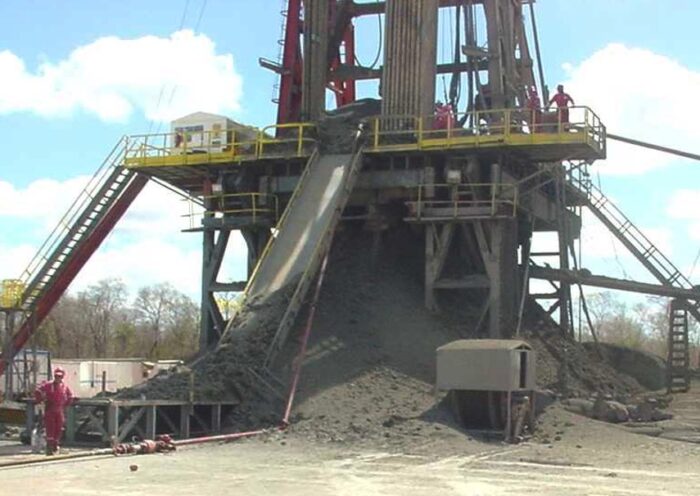Sand Production or ‘Sanding’ is the failure of the producing formation, followed by the flow of failed rock into the wellbore. Very often the flow of failed rock can come to the surface and into surface facilities. Particularly for high rate gas wells, sanding is a major safety issue and the produced solids can erode both downhole and surface flow lines.
The formation fails due to one or more effects:
- • shear (e.g., high stresses, low wellbore pressure, low rock strength);
- • tensile (e.g., high flow rate, perm damage at the cavity surface); and
- • erosion (e.g., high seepage forces).
Models and Analyses for Sanding Problems
There are a number of alternatives for performing a geomechanics sanding analysis based upon the available data and experience. At OFG, we work with our clients and their data to determine the best, fit-for-purpose technique for a given project:
- • Phenomenological models (correlations, field observations);
- • Field assessment of sand production potential and remedies;
- • Analytical models (conservative);
- • Semi-empirical (getting better, need calibration);
- • Numerical analysis of thick-walled cylinder (TWC) tests; and
- • Numerical analysis of perforation stability considering a full hydro-geomechanical coupled (uncoupled) model.
Avoiding Sanding, Sand Control or Sand Management?
Sand production can often be prevented – at the loss of production and reserves. Alternatively, techniques can be employed (gravel packs, frac & packs and screens) that control sand production by placing a physical barrier to sand production, but, typically, at the loss of production and reserves. Alternatively, the sand can be managed – produced and disposed when erosion potential can be controlled. Solids Management options, then, include:
- • Gradient (pressure/production) control to reduce sanding risk;
- • Selective perforation and/or oriented perforation;
- • Gravel packs, screens, filters, slotted liner installation, and expandable liners;
- • Frac for sand control – Frac-&-pack;
- • Horizontal wells, with lower pressure gradients;
- • Formation impregnation methods (i.e., resin squeeze); or
- • Sand Management (rather than exclusion) providing:
- • Higher rates of production; and
- • Lower completion costs
- Note that under Sand Management, many wells will develop an increasingly “negative skin” (higher PI) often requiring a redesign the wellhead assembly. In addition Sand Management requires the establishment of sand handling at the surface and the monitor of sand influxes to minimize risk.




